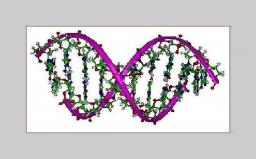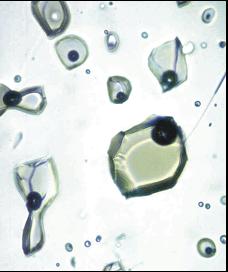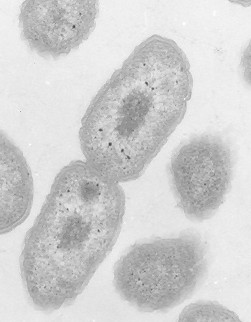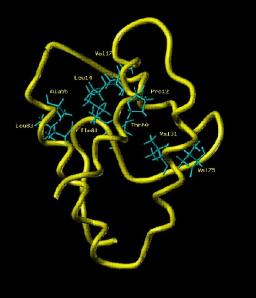 Physics and chemistry for life sciences and the environment
Physics and chemistry for life sciences and the environmentPhysical Chemistry for life sciences : The basic principles of chemistry and physics naturally apply to biology although its complexity is challenging. Some methods in nanotechnology, developed by physicists and chemists within IRAMIS, can be used to explore it. Research in that field focuses on both the development of biosensors where the know-how in chemical functionalization is used, or on the exploitation of magnetic properties to explore the elements of life in vitro, in cellulo and finally in vivo.
In addition, spectroscopic methods and in particular neutron scattering, with its sensitivity to light elements, allows exploring with a physicist point of view, the dynamic properties of biomolecules.
Physical Chemistry for the environment : Mastery of our environment is a major challenge for the coming years. While in some cases nanotechnologies are suspected generating further contamination, they can also be used for new methods of pollution control and environmental regeneration.
Les nanotechnologies offrent de nombreuses méthodes innovantes pour le piégeage de nombreux éléments polluants, chimiques, biologiques ou encore des métaux lourds. Des méthodes de dépollution à l'aide de filtres à base de matériaux nanoporeux ou de fibres de carbone fonctionnalisées sont ainsi développées au LICSEN.
Une de ces méthodes concerne la capture sélective et simultanée de différents métaux en milieux liquides, par de nouveaux matériaux adsorbants à base de fibres de carbone. Ces recherches ont conduit à l'élaboration du procédé CYTER de recyclage et récupération des terres rares (LICSEN), aujourd'hui mis en oeuvre par la socité AJELIS.
La photocatalyse est une autre méthode de dépollution active. On vise ici à la minéralisation complète d’un polluant par des réactions d’oxydation ou de réduction à la suite de l’absorption de la lumière par un photocatalyseur. L'équipe du LEDNA s'intéresse ainsi au cas particulier de la dépollution de l’eau de ses polluants chimiques et biologiques à l'aide de nanoparticules synthétisées au laboratoire.
This topic shared between the CEA, the CNRS, the 'Institut de Physique du Globe' of Paris and the University Pierre and Marie Curie (Paris VI) called upon environment and Earth sciences with physics and chemistry. Developed research combines tests at the laboratory, ground studies and powerful analysis tools like the neutron activation or the nuclear microprobe. This research relates to mainly magmatology and volcanology which implement two approaches of chemical geodynamics. The first (chronologically) is founded on a compared geochemistry of the elements in traces, with the aim to obtain information on the processes of formation of the rocks and the transformations of the great elements of the planet (coat - crust). Second is founded on the study of the vitreous inclusions trapped in the mineral phases during growth in the magmas.
In addition, the DRECAM regularly used its tools to evaluate the consequences of pollution by heavy elements (anthropic or natural) by analyzing various samples issued from the natural environment (plants, shellfish...).
Today, industrial and scientific activities employing radioactive elements produce considerable amounts of waste that may pose a risk to the environment and to public health due to their chemical and ionizing properties. Understanding the transfer mechanisms of such anthropogenically derived elements in the environment and their possible accumulation in living organisms is necessary for the assessment of their environmental toxicity. In this context, detailed knowledge on transfer mechanisms of heavy metals, metalloids and radionuclides from an external environment to living organisms, as well as transportation to target organs or cells are important. Similarly, the impact of the the physico-chemical form (speciation) of such heavy metals and radionuclides may have a high impact on their mobility and toxicity, and must be taken into account when their impact on the environment and public health is assessed.
On a long term, our aim is to develop technical solutions that prevent the accumulation of potentially toxic elements in a wide range of organisms and their sensitive organs, and to combine this knowledge with remediation technology that can reduce the general environmental impact and critical transfer processes if needed. Results from this field of research will surely represent major economic and public health assets to the society in the future.
Three research programs of the IRAMIS found an natural extension towards biology:
- Molecular engineering, where studies of co-operative interactions of molecules in solution found a direct extension towards studies of proteins and of the various assembly modes of biological interest molecules,
- Matter with high density of energy, where radiolysis, molecule radiation interactions, can be directly transposed to molecules like the ADN,
- Divided ultra matter, where nanostructured materials, nanophysics and biology converge.
Knowledge and use of techniques which were traditionally in the physicist or the chemist fields appears valuable in the study of biological objects. Mainly, that relates to laser studies, neutron diffusion and diffraction, nonconventional NMR especially developed for the study of proteins, ICP-MS (coupling gun plasma - mass spectrometry) analyses and nuclear microprobe for the study of biological and environmental samples (micro-organisms, cells, fabrics, plants…).
















